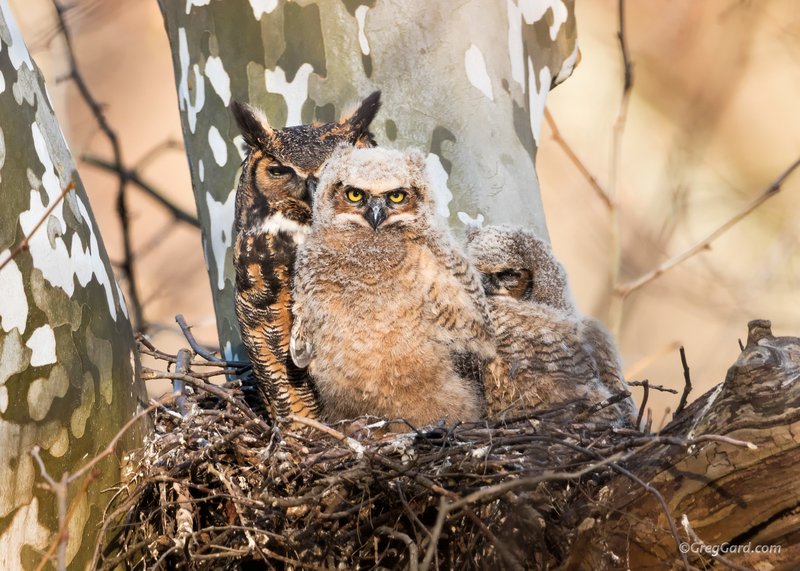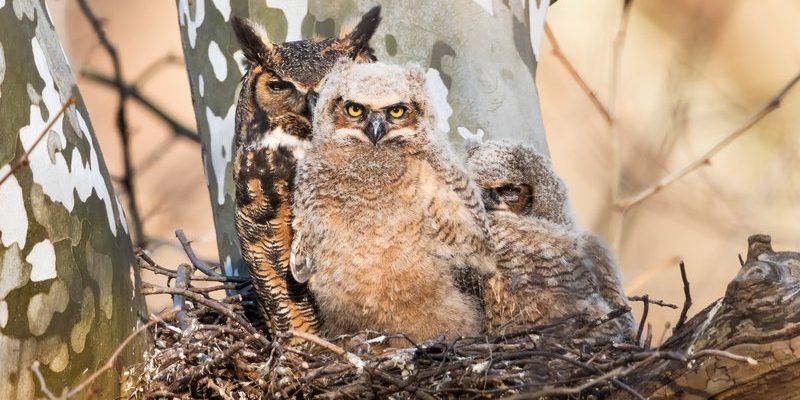
Owls are remarkable not just for their wisdom and graceful flight, but also for their unique way of life. Each species has its quirks and traits, making them a treasure trove of information for bird watchers and nature enthusiasts alike. So, grab your favorite drink, and let’s dive into the world of these nocturnal wonders.
Where Do Owls Nest?
When it comes to nesting, owls are a bit of a mixed bag. Some species opt for tree hollows, while others might choose to nest in abandoned structures or even on the ground. For example, the Great Horned Owl often prefers to take over old nests made by hawks. This means they can find a home without having to work too hard on building one themselves. It’s like moving into a cozy apartment that’s already furnished!
One thing to keep in mind is that most owls are quite selective about their nests. They look for spots that offer good cover from predators and have easy access to food. So whether they’re perched high in a tree or nestled in a rocky crevice, you can bet they’ve chosen their nesting site carefully.
How Do Owls Choose Their Breeding Partners?
You might be wondering how owls find their mates. Well, it’s not just a game of chance. During the breeding season, male owls often perform elaborate courtship displays. This can include hooting, swooping, and showing off their impressive wingspan. Imagine a dance-off, where the best moves earn the admiration of potential partners!
Once a pair forms, they often stay together for multiple breeding seasons. This loyal partnership ensures that they have a reliable team in raising their young. In a way, they’re like the ultimate parenting duo, sharing responsibilities and ensuring their chicks have the best chance of survival.
Understanding the Owl Lifecycle
The lifecycle of an owl is fascinating and filled with stages. It starts when the female lays her eggs, usually 1 to 4 in number, depending on the species. The female incubates the eggs, which can take anywhere from 28 to 35 days. During this time, the male provides food, flying back and forth with meals. It’s like an intense delivery service, just without the fancy apps!
After hatching, the owlets are completely dependent on their parents. They stay in the nest for several weeks, growing quickly and developing their feathers. It’s a bit like an all-you-can-eat buffet, as the parents bring food like small mammals, birds, and insects. Honestly, watching a parent owl bring back dinner is probably one of nature’s greatest survival shows.
How Long Do Owls Stay with Their Parents?
Once the owlets reach a certain age, they begin to venture out of the nest. This happens around 6 to 8 weeks after hatching. However, they continue to rely on their parents for food and protection for several months. It’s a transitional period, where they start to learn the ropes of being an independent owl.
Eventually, when they’re about 10 to 12 weeks old, they begin to fly. This remarkable leap is a bit like finishing school, where they graduate from their cozy nest to explore the world on their own. But make no mistake, these young owls often face challenges as they learn to hunt and find their own territory.
Do All Owls Nest in the Same Way?
You might be surprised to learn that not all owls nest in the same manner. Different species have unique preferences and habits. For instance, the Barn Owl often nests in barns or old buildings, while the Eastern Screech Owl prefers tree cavities. These different choices reflect their adaptations to environments.
There are also variations in nesting behavior. Some owls will return to the same nesting site year after year, while others may choose new locations for each breeding season. Understanding these differences can provide a deeper appreciation for how owls thrive in their habitats.
The Importance of Owl Nesting Habits
So, why should we care about owl nesting habits? For starters, owls play a significant role in controlling rodent populations. By studying their behavior and lifecycle, researchers can better understand ecological balance. It’s like waking up in the morning knowing your home is free from pests—owls help keep that balance in nature.
Moreover, as habitats change due to urbanization and climate change, understanding these nesting habits can help in conservation efforts. Protecting nesting sites ensures that these magnificent birds can continue to thrive, maintaining the delicate balance of their ecosystems.
Owls are truly remarkable creatures with fascinating nesting habits and an intricate lifecycle. From their unique breeding rituals to the way they nurture their young, they remind us of the beauty and complexity of nature. The next time you hear an owl hooting in the night, take a moment to appreciate the secret life unfolding above you. Just like a good book, there’s always more to discover when it comes to these silent guardians of the night.
So, whether you’re a bird watcher or just curious about nature, understanding the lives of owls can enrich your appreciation for these incredible birds and their role in the ecosystem.

